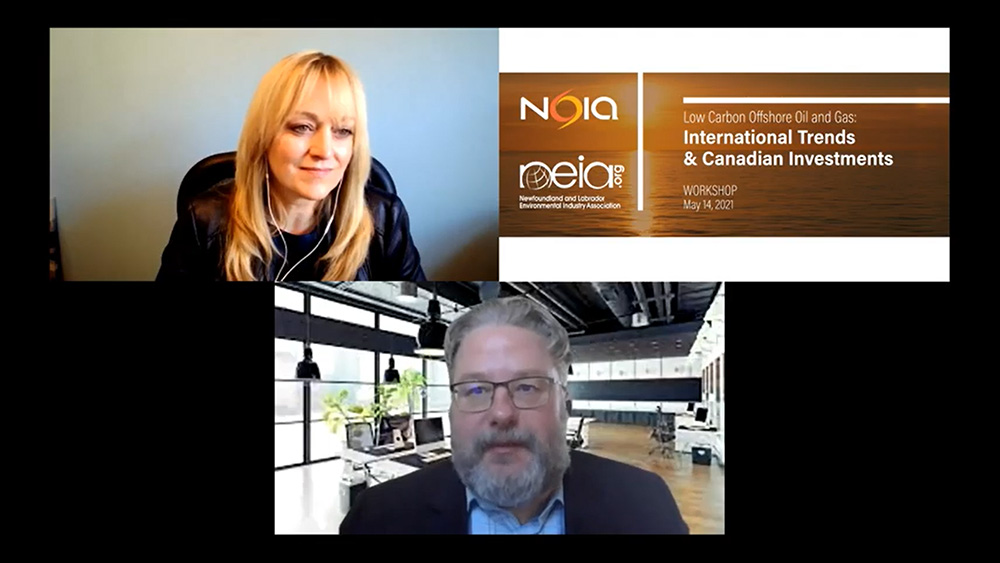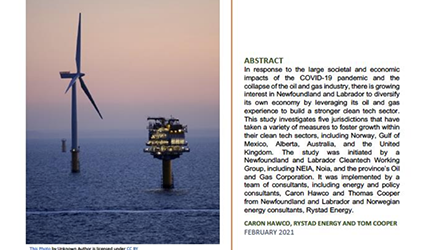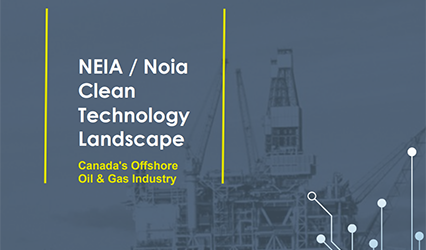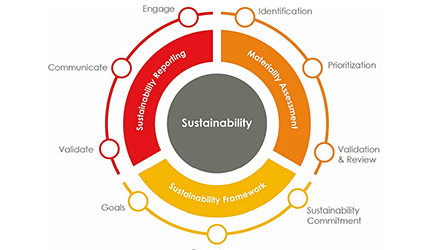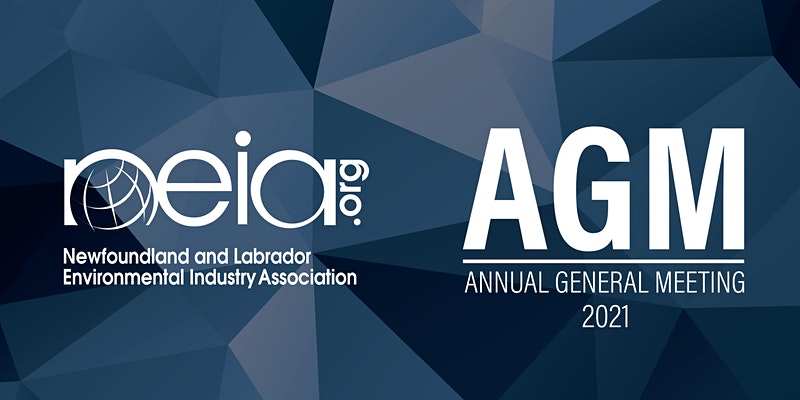A wide variety of funding opportunities are currently available to support clean growth projects in Canada.
NEIA is interested in helping ensure that Newfoundland and Labrador is making every effort to benefit from these programs.
Do you have a project in development that aligns with the objectives of any of these programs?
NEIA can help you position your application, and/or find partners to strengthen your proposal. Please contact NEIA’s Executive Director Kieran Hanley at kieran@neia.org.
Advancing Climate Change Science and Technology – Informing carbon sink enhancements: nature-based climate solutions

This request for proposals will provide up to $6 million per project for a total of up to $59 million to eligible organizations over a maximum of five years.
Proposals should advance the quantification of, and reduce uncertainties in, our understanding of Canada’s carbon sinks to inform opportunities to employ Nature-Based Solutions to achieve net-zero greenhouse gas emissions in Canada. The results should inform the development of integrated estimates of greenhouse gas emissions and removals from Canadian ecosystems, our understanding of how direct land management actions impact ecosystem carbon cycles, or our understanding of the potential role of carbon sinks in Canada’s greenhouse gas mitigation strategy.
Also of interest are proposals that will inform Canada’s reporting on efforts to enhance natural carbon sinks, including the quantification of those actions, and will improve reliability and consistency in reporting methodologies for managed and unmanaged lands, wetland restoration, forestry and agricultural practices. Additionally, proposals could also address direct and/or indirect impacts on climate, air quality, ecosystem function, and biodiversity.
Eligible recipients: Lead applicants must be one of the following: universities and other academic institutions; not-for-profit non-government organizations (NGO, e.g., environmental community groups); or Indigenous organizations.
Deadline: June 10, 2021
Advancing Climate Change Science and Technology – Understanding the potential for, and implications of, negative emission technologies

This request for proposals will provide up to $6 million per project for a total of up to $59 million to eligible organizations over a maximum of five years.
Proposals should advance our understanding of the extent to which technologies to remove carbon from the atmosphere — such as Direct Air Capture and Carbon Capture and Sequestration — may contribute to the net-zero goal. Proposals could explore the efficacy of different technologies and practices (including the development and testing of measurement tools), their economic viability, the risks associated with their use, and optimal policies for scaling up these technologies/practices (e.g., carbon price, tax credits). Also of interest are proposals that advance our understanding of potential environmental trade-offs and ecological or atmospheric parameters for validating large-scale quantitative assessments of emissions and removals resulting from intentional enhancement.
Eligible recipients: Lead applicants must be one of the following: universities and other academic institutions; not-for-profit non-government organizations (NGO, e.g., environmental community groups); or Indigenous organizations.
Deadline: June 10, 2021
Advancing Climate Change Science and Technology – Understanding city- and municipal-level GHG emissions and mitigation effectiveness

This request for proposals will provide up to $6 million per project for a total of up to $59 million to eligible organizations over a maximum of five years.
Proposals should contribute to improving the quantification of GHG emissions and short-lived climate forcers at the city and municipal level, and enable the application of methods to identify mitigation opportunities and evaluate their effectiveness to augment national reporting processes (e.g., advancing the use of top-down atmospheric observations or bottom-up inventory-based approaches). Proposals could advance work related to atmospheric monitoring and modelling aimed at identifying emission reduction opportunities by source type and tracking changes in emissions (i.e., top-down approaches), as well as work to evaluate these top-down estimates against bottom-up emissions estimates. Proposals could also explore methodologies and protocols for using in-situ low-cost medium-precision GHG sensor technology to inform mitigation actions and evaluate effectiveness in a way that enables consistent application across Canada and aligns with international approaches.
Eligible recipients: Lead applicants must be one of the following: universities and other academic institutions; not-for-profit non-government organizations (NGO, e.g., environmental community groups); or Indigenous organizations.
Deadline: June 10, 2021
Advancing Climate Change Science and Technology – Understanding multiple benefits of integrated mitigation approaches for greenhouse gases and air pollutants

This request for proposals will provide up to $6 million per project for a total of up to $59 million to eligible organizations over a maximum of five years.
Proposals should improve understanding of how greenhouse gas and air pollutant mitigation strategies impact both climate and air quality, recognizing that climate forcers and air pollutants frequently share common sources and climate forcers are often air pollutants themselves. This could include work to develop and apply new joint climate and air quality models and analysis frameworks to evaluate emission pathways for achieving net-zero GHG emissions and air quality objectives. Proposals aimed at quantifying the potential multiple benefits (e.g., reduced impact on human health and sensitive ecosystems) would also be valuable. This could include multidisciplinary studies across climate, air quality, health, and agriculture to understand the integrated impact of GHG and air pollutant mitigation.
Eligible recipients: Lead applicants must be one of the following: universities and other academic institutions; not-for-profit non-government organizations (NGO, e.g., environmental community groups); or Indigenous organizations.
Deadline: June 10, 2021
Advancing Climate Change Science and Technology – Understanding and quantifying transportation sector emissions in Canada

This request for proposals will provide up to $6 million per project for a total of up to $59 million to eligible organizations over a maximum of five years.
Proposals should improve the characterization of travel behaviour in Canada (e.g., on-road public and private, including cars, trucks, buses, etc.) and inform improved inventory reporting and targeted policies to reduce GHG and air pollutant emissions, leveraging big data analytics, telematics, and other techniques. While there is high confidence in total transport emissions and some of the key drivers (e.g., total fuel consumption) and correlated variables (e.g., total number of vehicles), proposals are sought to address critical knowledge gaps in the more refined and geospatially resolved understanding of transportation emissions, such as use patterns of where, when, and what types of vehicles are driven over what distances or modal preferences. Proposals could also examine how travel patterns respond to significant changes, such as pandemics, socio-economic shocks, or extreme events, to quantify changes in travel patterns over time and modal shifts.
Eligible recipients: Lead applicants must be one of the following: universities and other academic institutions; not-for-profit non-government organizations (NGO, e.g., environmental community groups); or Indigenous organizations.
Deadline: June 10, 2021
Smart Renewables and Electrification Pathways Program

Up to $964 million over four years for smart renewable energy and grid modernization projects.
The program provides direct financial support to eligible renewable energy and grid modernization projects during the construction phase. Projects must use market ready technologies and apply workplace equity, diversity, and inclusion components. Programs in the following streams can be supported:
- Established Renewables (examples: solar photovoltaic, onshore wind, small hydro)
- Emerging Technologies (examples: geothermal, energy storage)
- Grid Modernization (examples: micro-grids, virtual power plants, and hardware/software to enable grid services). Open only to utilities and/or electricity system operators.
Eligible recipients: Legal entities validly incorporated or registered in Canada; Provincial, territorial, regional and municipal governments and their departments and agencies; Indigenous communities and governments, Tribal Councils, National and regional Indigenous councils or organizations, and Indigenous for-profit and not-for-profit organizations.
Deadline: The Program will continuously accept project registrations and applications until funds are fully committed.
Green and Inclusive Community Buildings – Continuous Intake

This five-year $1.5 billion program will support green and accessible retrofits, repairs or upgrades of existing public community buildings and the construction of new publicly-accessible community buildings that serve high-needs, underserved communities across Canada.
Applicants with small and medium retrofit projects to existing community buildings ranging in total eligible cost from $100,000 to $3 million will be accepted on a continuous basis and funded on a rolling intake basis.
Eligible recipients: municipal governments; provincial governments; public sector bodies that are established by or under provincial or territorial statute or by regulation or are wholly-owned by a province, territory, municipal government (economic development organizations, public utilities, etc.); federally or provincially incorporated not-for-profit organizations and registered charities; and Indigenous groups and focused organizations
Deadline: The program will continuously accept project registrations and applications until funds are fully committed.
Green and Inclusive Community Buildings – Scheduled Intake

This five-year $1.5 billion program will support green and accessible retrofits, repairs or upgrades of existing public community buildings and the construction of new publicly-accessible community buildings that serve high-needs, underserved communities across Canada.
Applicants with large retrofit projects to existing community buildings or new community building projects with total eligible costs ranging from $3 million to $25 million will be accepted through a competitive intake process.
Eligible recipients: municipal governments; provincial governments; public sector bodies that are established by or under provincial or territorial statute or by regulation or are wholly-owned by a province, territory, municipal government (economic development organizations, public utilities, etc.); federally or provincially incorporated not-for-profit organizations and registered charities; and Indigenous groups and focused organizations
Deadline: July 6, 2021
Zero Emission Vehicle Infrastructure Program

The Zero Emission Vehicle Infrastructure Program (ZEVIP) is a 5-year $280 million program ending in 2024 and its objective is to address the lack of charging and refuelling stations in Canada.
NRCan’s contribution through this Program will be limited to fifty percent (50%) of Total Project Costs up to a maximum of five million dollars ($5,000,000) per project.
This Request for Proposals (RFP) targets ZEV infrastructure projects in public places, on-street, multi-unit residential buildings, workplaces and light-duty vehicle fleets, as described below:
- Public Places – The program will support electric vehicle charging infrastructure deployment in parking areas intended for public use. Parking areas can be privately or publicly owned and operated. Examples of public places include, but are not limited to: service stations; retail; restaurants; arenas; libraries; medical offices; park and ride; etc.
- On-Street – The program will support electric vehicle charging infrastructure deployment on-street. On-street charging is considered charging infrastructure for public use and is managed by local governments.
- Workplaces – The program will support zero-emission infrastructure deployment at workplaces. A workplace is defined as a location where employees perform duties related to a job. For the purpose of the program, the charging or hydrogen refuelling infrastructure must be primarily used by the employees. Charging or hydrogen refueling infrastructure installations at a private residence even if a business is registered at the same address, are not included in this category.
- Light, Medium and Heavy-Duty Vehicle Fleets – The program will support zero-emission infrastructure for on-road vehicle fleets. A light-duty vehicle is considered as having a gross vehicle weight rating (GVWR) of less than or equal to 3,856 kg. Medium and heavy-duty vehicles are considered as having a gross vehicle weight rating (GVWR) of more than 3,856 kg. Fleet vehicles are owned or leased by an organization and used in support of organizational or business operations and activities. Fleets are composed of multiple vehicles and are managed by common ownership. Examples of light-duty vehicle fleets include a fleet of taxis, car rentals, municipal vehicles, car sharing, etc. Examples of medium or heavy-duty vehicle fleets is a fleet of last-mile delivery trucks, school buses, refuse trucks, public utility vehicles, etc.
- Multi-Unit Residential Buildings (MURBs) – The program will support electric vehicle charging infrastructure deployment in multi-unit residential buildings (MURBs). MURB charging is defined as infrastructure in parking spaces where people live. For the purpose of the program, to be designated as a MURB the building must include a minimum of three (3) dwelling units.
Eligible recipients: Electricity or gas utilities; Companies; Industry associations; Research associations; Standards organizations; Indigenous and community groups; Academic institutions; or Provincial, territorial, regional or municipal governments, or their departments or agencies where applicable.
Deadline: June 22, 2021
Investments in Forest Industry Transformation (IFIT) – Capital Investment Projects

The Investments in Forest Industry Transformation (IFIT) program facilitates the adoption of transformative technologies and products by bridging the gap between development and commercialization. The IFIT program aims to create a more competitive and resilient forest sector with a focus on low-carbon projects that result in new or diversified revenue streams.
Capital funding to support transformational projects by forest sector firms to diversify into new product streams and ensure industry competitiveness.
Eligible recipients: For-profit companies located in Canada, that either: produce forest products in an existing facility (i.e. pulp, paper or solid/engineered wood products facility); or are new entrants in the Canadian forest sector for the purpose of the proposed project, will be new entrants in the Canadian forest sector for the purpose of the proposed project, or are the lead applicant for a cluster or consortium.
Deadline: July 22, 2021
Investments in Forest Industry Transformation (IFIT) – Studies Projects

The Investments in Forest Industry Transformation (IFIT) program facilitates the adoption of transformative technologies and products by bridging the gap between development and commercialization. The IFIT program aims to create a more competitive and resilient forest sector with a focus on low-carbon projects that result in new or diversified revenue streams.
Funding to conduct studies linked to the advancement of innovation in the forest sector in support of a future capital investment or strategic shift by forest sector firms.
Eligible recipients: For-profit companies located in Canada, that either: produce forest products in an existing facility (i.e. pulp, paper or solid/engineered wood products facility); or are new entrants in the Canadian forest sector for the purpose of the proposed project, will be new entrants in the Canadian forest sector for the purpose of the proposed project, or are the lead applicant for a cluster or consortium.
Deadline: The program will continuously accept project registrations and applications until funds are fully committed.
Canadian Agricultural Strategic Priorities Program

Provides funds for projects that address national or sector-wide priorities that help industry address emerging issues and capitalize on opportunities.
The maximum AAFC contribution for a project will normally not exceed $1 million. You can apply for and receive funding for more than one project, but generally speaking, funding will not be more than $5 million over five years for each applicant. If approved for funding, eligible project costs will be shared between you and AAFC at a ratio of 50 percent from your organization to 50 percent from AAFC.
In order to be eligible for funding, applicants must clearly demonstrate the issue that is facing the Canadian agriculture, agri-food and agri-products sector, how the project results will benefit the sector, and how the project aligns with one or more of the four priority areas identified:
- adaptation to new technology (e.g. Coordinated approaches to adapt and take full advantage of emerging opportunities; Test and adopt technology solutions in collaboration with research centres; Solve technical hurdles that overcome barriers to encourage adoption of new technology in Canadian agriculture; Develop more value added products)
- environmental sustainability (e.g. Support the development of environmental initiatives, resiliency, and adoption demonstration projects; Complementing environmental sustainability and climate change activities under the Canadian Agricultural Partnership and other programs)
- strategic planning and capacity building (e.g. Organizational capacity support; Supporting transformation in the agricultural sector; Developing strategic planning initiatives that complement value chain roundtable, agri-food economic table, and other discussions)
emerging issues
Eligible recipients: Not-for profit organizations that are incorporated in Canada.
Deadline: The program will continuously accept project registrations and applications until funds are fully committed.
Northern REACHE Program

The Northern Responsible Energy Approach for Community Heat and Electricity program, also called the Northern REACHE program, funds renewable energy and energy efficiency projects, and related capacity building and planning including in Nunatsiavut.
The program objective is to reduce Northern communities’ reliance on diesel for heating and electricity by increasing the use of local renewable energy sources and energy efficiency. This will result in environmental, social and economic benefits to support developing healthier, more sustainable Northern communities.
Eligible projects will focus on proven technologies such as: solar; wind; energy storage; hydro; biomass heating; residual heat recovery; and LED lighting.
Eligible recipients: First Nation and Inuit communities; First Nation and Inuit development corporations; municipalities; Indigenous organizations; territorial governments and their organizations; regional governments; not-for-profit organizations; modern land claim organizations; and
First Nation self-government.
Deadline: The program will continuously accept project registrations and applications until funds are fully committed.



